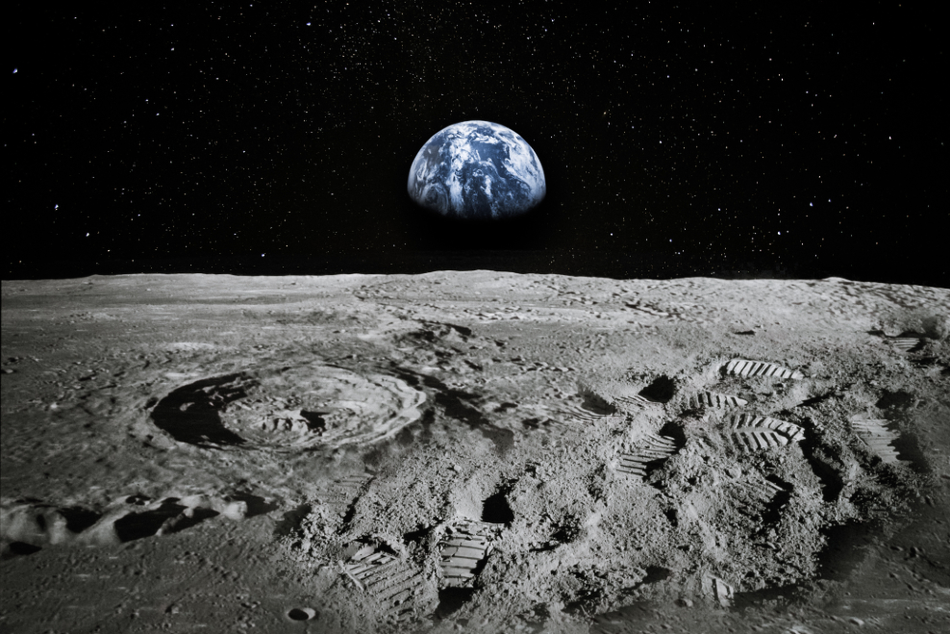With nearly half a century passing between now and the last time humankind walked on the Moon, NASA has announced a new program that would see astronauts set foot on the lunar surface. Dubbed the Artemis program, the plan is to return to the Earth’s only natural satellite to kickstart humanity’s exploration of extraterrestrial terrains in the further regions of outer space, namely that of Mars.

Image Credit: Elena11/Shutterstock.com
The official NASA webpage for the Artemis program – named after the eponymous Greek Goddess of the hunt, forest, hills, and the Moon – states:
“NASA will land the first woman and next man on the Moon by 2024, using innovative technologies to explore more of the lunar surface than ever before.”
NASA
NASA also states that it intends to collaborate with commercial and international partners to establish “sustainable exploration by 2028.” Once they have completed a thorough survey of the Moon’s surface and nearby surroundings, the newest data compiled will be used to initiate the subsequent phase of the space agency plan “to take the next giant leap – sending astronauts to Mars.”
While the leaders of the American administration in the House and Senate have pledged an agreement in principle to pass the appropriate bills to continue funding throughout 2020, the program has been afflicted by various budgeting concerns. With added pressure from the White House, who wish to see the 2024 deadline achieved, NASA administrator Jim Bridenstine has said:
“We’ve got to look at creative ways where we can move forward, even in this politically charged environment.”
The commitment and motivation of NASA’s desire to reach the Moon by 2024 is galvanized by the scheduled launch of Artemis I later this year. This launch will test the Artemis space launch system in conjunction with the Orion spacecraft. Moreover, in May 2019, NASA awarded Maxar Technologies with a contract worth $375 million to develop and manufacture power, propulsion, and communications for a Moon orbiting space station known as the Lunar Gateway.
With a new space race seemingly underway, including Chinese and Indian missions to reach and explore new territories of the lunar surface, NASA’s Artemis program has a long ‘to-do’ list propelling the program towards its goals.
To keep the mission program on track, the space agency added five new American companies to the current pool of vendors to help develop the technologies required to deliver payloads to the Moon’s surface. Furthermore, the Japanese Aerospace Exploration Agency (JAXA) will also work on the Artemis project, assisting with the building and realization of the Lunar Gateway project.
Among the American companies listed is SpaceX who is currently developing the reusable Starship vehicle which will be capable of carrying crew and cargo beyond low-Earth orbit, the Moon, Mars and beyond.
During a NASA-organized CLPS teleconference in November last-year, SpaceX president and chief operating officer Gwynne Shotwell stated, "We are aiming to be able to drop Starship on the lunar surface in 2022." Nothing is guaranteed for SpaceX and, as well as overcoming their internal development targets, they must also compete against the other vendors bidding for contracts in the Artemis program.
While the focus of the program is very much on landing on the Moon’s surface for lunar research to prepare for future missions to Mars, NASA is committed to making sure the program is sustainable with reusable technologies and architecture integrated into the project. Furthermore, the aptly named program will also see the first woman step on the Moon, which marks another progressive milestone in space exploration.
The success of the Artemis program relies heavily on NASA achieving its targets concerning funding and timing. However, if the program does meet its optimistic ambition, we may well see the Moon being used as a strategic outpost for making humanity’s next dream a reality – walking on the surface of Mars.
Disclaimer: The views expressed here are those of the author expressed in their private capacity and do not necessarily represent the views of AZoM.com Limited T/A AZoNetwork the owner and operator of this website. This disclaimer forms part of the Terms and conditions of use of this website.